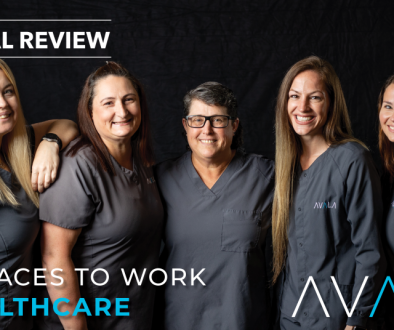Backpacks Weighing You Down?
More than 40 million students head to class each day with backpacks slung over their shoulders. About 20 million of those students are carrying twice the recommended weight on the back which can lead to stress injuries and spinal pain that can worsen with age.
According to a survey conducted by the North American Spine Society, 42.6% of NASS member physicians have treated children or teens suffering from back pain or spine trauma caused by overloaded or improperly used backpacks. The diagnoses range from cervical, thoracic and lumbar strain to spondylolysis, a stress fracture in a vertebra.
To raise awareness of this issue, here are the ABC’s of Backpack Safety – tips for preventing backpack injuries.
- A – Allow Wheels
- Try using a backpack on wheels.
- This type of back pack is helpful if a child is already symptomatic or if parents anticipate that he/she will be carrying loads more than 25 lbs.
- B – Back to Basics
- 20.8% of the spine specialists polled recommend the traditional style backpack.
- If you opt for this style, make sure the pack has two thick, padded straps along with a waist strap for added lumbar support.
- C – Comfort Counts
- Parents shouldn’t buy the first back pack they see.
- It’s important to make sure the backpack feels comfortable to the child and the straps can be adjusted for a tight fit.
- D – Don’t Overload
- Whatever backpack style parents choose for their children, it’s important to remember it’s what’s inside that really counts!
- In fact, 64% of those surveyed claim that overloading the pack is the number one way children and teens improperly use their backpacks.
- All of the doctors surveyed agreed that the size of the pack should be proportionate to the child, NOT to the size of the items he will be carrying.
- E – Everything Is Too Much
- Pack only what you need!
- The pack should weigh no more than 10-15% of the child’s body weight.
- F – Fit Your Frame
- Always use both straps and adjust them snugly on your shoulders.
- G – Get Organized
- Organize the pack so the heavy items are closest to your back.
- Use smaller compartments to help store loose items and distribute the weight evenly.
- H – Heavy Hurts
- Don’t carry more than you can handle.
- Make frequent stops to unload the pack.
- Encourage your child not to carry all the books they will need for the day.
Spine Pain and Surgery
Are you experience neck or back pain? Chronic pain in the neck or low back can make it hard to complete everyday activities. Sometimes, short-term remedies don’t help, and pain medications provide unwanted side effects.
For the patients who have tried every non-surgical option and are ready for some relief, Avala physicians offer minimally invasive techniques using state of the art imaging and robotics to get you back to your life as quickly as possible. Some of these procedures only call for a band-aid over your incision and will get you back to your house the same day after surgery.
What is Minimally Invasive Spine Surgery?
Minimally Invasive spine surgery is a new way to treat your neck and low back pain, without huge incisions and cutting through muscle tissue to access the spine. Instead, our physicians use the smallest incisions possible, sometimes less than half an inch, and maneuver through the muscles in your body, pushing them out of the way, rather than cutting them. These practices mean less trauma to the body, and therefore less pain, and a shorter recovery period. Minimally Invasive spine surgery also means less blood loss and reduces the risk of infection. Most patients are up and walking the same day after surgery.
Robotics-assisted Spine Surgery
Avala is the only facility in the region and one of only 40 hospitals in the nation offering robotics-assisted procedures for the spine. The Globus Exclesius GPS robot serves as a tool for our physicians to plan a specific procedure that is based on your personal anatomy. During surgery, the robot will also help our minimally invasive surgeons visualize your spine and make accurate and precise placement of hardware in your spine.
These technological advancements allow many Avala patients to undergo spine surgery, and then return to life without neck or back pain.
- Common Spinal Procedures
- Anterior Cervical Discectomy and Fusion (ACDF)
- Cervical Disc Replacement
- Micro Discectomy/Laminectomy
- Posterior Lumbar Interbody Fusion (PLIF/TLIF)
- Anterior Lumbar Interbody Fusion (ALIF)
- Direct Lumbar Interbody Fusions (DLIF/XLIF)




